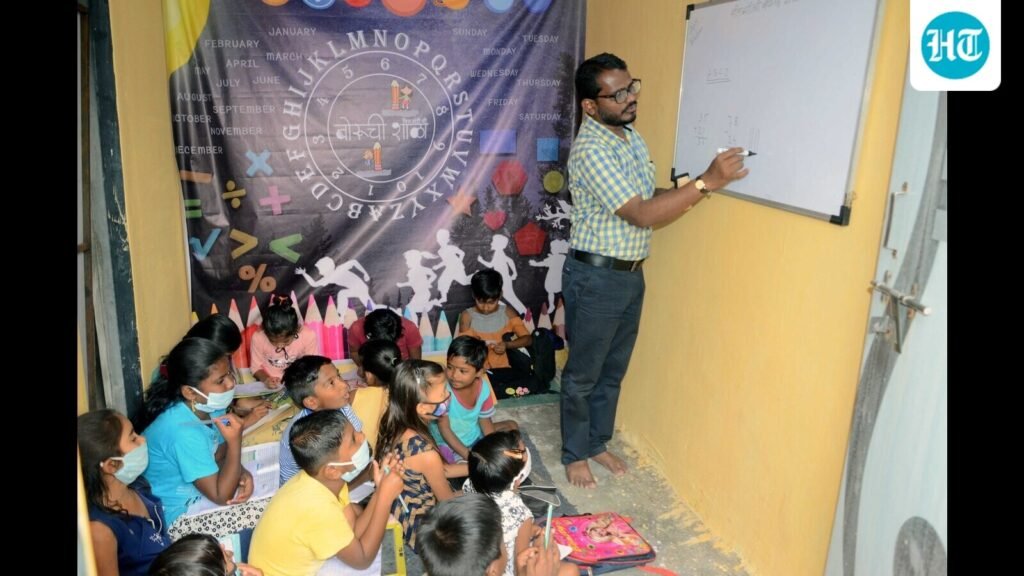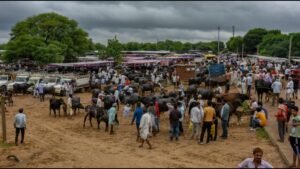
India’s Economic Ecosystem has been matured considerably over the past two decades, particularly in its support for enterprise-jam. Consider the Micro, Small, and Medium Enterprises (MSME) Sector: There is an over 63 million registered enterprises, Employing more than 250 Million People, GAINING from Targeted Instibles, Wor next access Formalized Institutional Support. This structured approach has enabled scale, resilience, and innovation.

India’s Non-Profit Sector Holds Similar Potential. With over 3.9 Lakh Registered Ngos, Many Complement Public Systems and Service Delivery. These ngos are partnering on flagship government programs Their adaptive, frugal models bridge last-mile delivery gaps effectively at low costs. Yet, Most Function with Constrained Institutional Capital and Short-Term Funding Cycles, Making Long-Term Planning and Organisational Development Dificult.
Many Organizations Work in Critical Sector Such as Early Childhood Care and Education (17%), Health and Nutrition (9%), Rural Development (11%), Or LivelihuHoods and Skilling (8%). They often work in close proximity to underserved communities, and their role in implementation is substantial and growing. YET, Capital Support has not kept pace.
According to the India Nonprofit Report (INR) 2025 by Dasra and Kearney, A Survey of 400 Ngos Reveled 91% Operate on Annual Budgets Below 10 Crore, Similar to Micro Enterprises in the Private Sector. However, 70% reported funding deficits based on their annual budgets, and only one in five have a reserve corpus. Smaller Organizations, Most Proximate to Marginalized Communities, are especially vulnerable to underfunding.
India’s Policy Support for MSMES Offers a Useful Parallel. Credit Guarantees, Collalectral-Free Loans, and Skilling Schemes have unlocked Scale and resilience in the sector. Recent reforms, Including Budget FY26’s Increased Investment and Turnover Limits, Signal long-term commission and a recognition of the sector’s structural needs. Given the demonstrated success of such an approach for msmes, a similar options exists for the non-profit sector to achieve great and resilience.
Based on the INR 2025 Survey, Non-Profit Organizations Working Within A Range of 1-10 Crore of Funding Are Largely Reliant on Government Grants, Corporate Giving, and Family Philantropy. The centers are building support infrastructure, such as the social stock exchange and the NGO Darpan Portal, to Multiply Avenues for Domestic Capital to Engage With India’s Non-Profit Ecosystem. This showcases investor confidence in the sector’s capabilities. While Current Funding Remains predominantly short-term and project-based, there is a growing scope to strengthen institutional resiliance through patient, flexible capital. Just as with msmes, an ecosystem approach, Combining Financial Instrument with Capacity-Building, Can Enable Non-Profits to Invest in Infrastructure, Leadership, and Innovation.
To enable Meaningful Impact, Funders must adopt a catalytic role-moving beyond short-term, project-based funding towards investments that buy institutional strength. This means support not just the programmatic work of non-protrofits, but also the foundational capacities that allows to deliver impact at scale. Such Support Includes Leadership Development, Strengthening Core Operations, and Investing in Systems Such as data, digital infrastructure, and talent. It also involves enhancing fundraising capabilites to help non-protrofits access more diverse capital and investment in narrative-market efforts that benefit the broader ecoctor ecosystem.
Cruising, this kind of support needs to be tailored to the specific needs and isesue area that non-protrofits work in-Capacity Building for a non-profit working in mental hearts in mental heart Climate or Education-Focused Organization needs. Ultimately, Catalytic Funding is About Providing Flexible, Multi-Yaar, Trust-Based Support that Gives Non-Profits the Room To Plan, Adapt, and Grow With Resilience.
Family philaanthropists are uniquely positioned to lead this shift. With Fewer Constraints, they have the autonomy to make bold bets, support underfunded causes, geographies and communities, and investment in long-term capacity.
Mackenzie Scott’s Giving Offers a Compelling Example. In just five years, she has provided over $ 19 billion in unrestricted Funding to more than 2,000 Organizations. These Grants Helped Recipients more than double their corpus reserves and investing in strengthening back-end systems, retaining talent, and expanding programs often into new geographies and populations. Non-Profit Leaders also reported Increased Confidence, Reduced Burnout, and Improved Innovation. Her Approach Illustrates that when Non-Profits have the flexibility to direct funding where it’s most needed, they gain the agency to deepen their work, adapt to shifting needs, and expert.
A less Indian Philantropists are beGining to adopt this approach, prioritising open dialogue with non-protrofits and treating them as equal partners in the pursuit of long-term impact. This shift is reflected in the work of Families like Rati and Riah Forbes, and Rohini Nilekani, Among others, Who are championing a more collabotive, long-term, and trust-bosed model of giving.
As India moves towed the viksit bharat goal, non-protrofits will be critical to ensuring that growth is inclusive, equitable, and sustainable. Like India Inc., which has positioned the country as a global business leader, Indian ngos are building locked locked solutions with the potential to serve as blasts creatures.
Unlocking this potential calls for philaanthropy to go beyond funding programs and begin enabling institutions. It will take collaborative Action Across Governments, Donors, and Ngos to Build a Strong EcoSystem, Foster Transparency, and ENSURE meaning to SDGE GATTERMENT. Investing in Non-Profit Resilience isn son is just good strategy, it’s integral to shaping a more just and thriving India.
Deval sanghavi is co-founder and partner, Dasra, and Nelesh Hundekari is Partner, Kearney. The views expressed are personal





